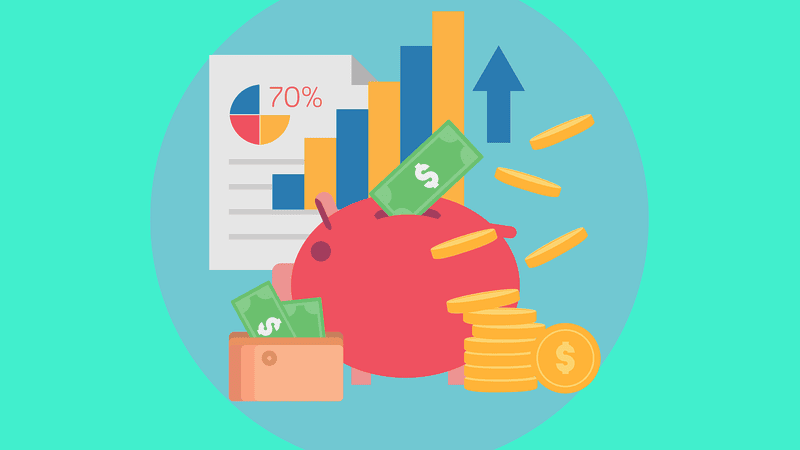Why Big Data Matters in Personal Finance and Budgeting

This article explores the significance of big data in the realm of personal finance and budgeting.
It delves into the role of big data in personal finance and the potential benefits of harnessing data analytics for better budgeting.
Additionally, it examines how data science can optimize financial decision-making by identifying spending patterns and leveraging data-driven insights for smarter saving strategies.
Finally, it considers the future of personal finance, highlighting the intersection of big data and AI.
Key Takeaways
- Big data analysis and utilization can greatly enhance financial decision-making in personal finance and budgeting.
- Predictive analytics and machine learning algorithms can help individuals make accurate predictions about their financial future and identify patterns and trends in financial data.
- Real-time budget tracking and monitoring can provide up-to-date information on financial transactions and spending habits, enabling individuals to make informed decisions and necessary adjustments.
- Personalized budget recommendations based on advanced algorithms and data analysis techniques can optimize budgeting and financial planning based on individual spending habits and income levels.
The Role of Big Data in Personal Finance
The role of big data in personal finance involves the analysis and utilization of large volumes of data to gain insights and make informed decisions regarding budgeting, investments, and financial planning. In recent years, the role of machine learning in personal finance has become increasingly important. Machine learning algorithms can analyze vast amounts of financial data to identify patterns and trends that may not be apparent to human analysts. This can help individuals make more accurate predictions about their financial future and make better decisions regarding their investments.
Additionally, big data has also had a significant impact on credit scoring. By analyzing a wide range of data points, including payment history, credit utilization, and personal information, sophisticated credit scoring models can be developed. These models can provide lenders with more accurate assessments of an individual’s creditworthiness, leading to more fair and accurate lending decisions.
Harnessing Data Analytics for Better Budgeting
This discussion focuses on the use of data analytics in budgeting to enhance financial decision-making, real-time budget tracking, and personalized budget recommendations.
By leveraging data analytics, individuals can make more informed financial decisions based on an analysis of their spending patterns and financial goals.
Real-time budget tracking allows individuals to monitor their expenses in real-time, enabling them to make necessary adjustments and stay on track with their financial goals.
Additionally, personalized budget recommendations provide tailored strategies and suggestions to help individuals optimize their budget and achieve their financial objectives.
Improved Financial Decision-Making
Enhanced financial decision-making is facilitated by the utilization of big data in personal finance and budgeting.
Data-driven budgeting and predictive financial analysis play a crucial role in helping individuals make informed financial decisions. By analyzing large volumes of data, individuals can gain valuable insights into their spending patterns, identify areas of financial weakness, and develop strategies to improve their financial health.
Data-driven budgeting allows individuals to track their expenses, set financial goals, and make more informed decisions about their spending habits.
Additionally, predictive financial analysis utilizes advanced algorithms to forecast future financial outcomes, enabling individuals to plan and make proactive financial decisions.
Real-Time Budget Tracking
Real-time budget tracking provides individuals with up-to-date information on their financial transactions and spending habits. With the advent of advanced technology and the availability of real-time data, individuals can now analyze their budgets in real-time, allowing for more accurate and informed decision-making.
Real-time budget analysis enables individuals to monitor their income and expenses as they occur, providing a clear picture of their financial situation. This analysis also allows individuals to identify patterns in their spending habits, helping them to predict future spending patterns and make adjustments as necessary.
Personalized Budget Recommendations
Personalized budget recommendations utilize advanced algorithms and data analysis techniques to provide individuals with tailored financial plans based on their unique spending habits and income levels.
These recommendations are made possible through the use of personalized budgeting tools and data-driven financial advice. By collecting and analyzing a vast amount of data about an individual’s financial profile, including income, expenses, and saving habits, these tools are able to generate personalized recommendations that take into account the individual’s specific financial goals and circumstances.
The algorithms used in these tools are designed to identify patterns and trends in an individual’s spending behavior, and based on this analysis, provide recommendations on how to optimize their budget and achieve their financial goals more effectively.
This data-driven approach to budgeting provides individuals with valuable insights into their financial habits and helps them make more informed decisions to improve their financial well-being.
Using Data Science to Optimize Financial Decision-Making
Utilizing data science techniques enables the optimization of financial decision-making in the context of personal finance and budgeting. One area where data science can be particularly impactful is investment analysis. By analyzing large sets of historical financial data, data scientists can identify patterns and trends that can be used to predict future market trends. This information can then be used to make informed decisions about which investments to pursue and when to buy or sell assets. Data science techniques such as machine learning algorithms can also be employed to develop predictive models that can help individuals make more accurate and profitable investment decisions. By leveraging the power of data science, individuals can enhance their financial decision-making and increase the likelihood of achieving their investment goals.
| Investment Analysis Using Data Science | Predicting Future Market Trends |
|---|---|
| Analyzing historical financial data | Identifying patterns and trends |
| Making informed investment decisions | Enhancing financial decision-making |
| Employing machine learning algorithms | Developing predictive models |
| Increasing the likelihood of success | Achieving investment goals |
How Big Data Can Help Identify Spending Patterns
Identifying spending patterns can be facilitated through the analysis of large sets of financial information. By analyzing financial trends, it is possible to gain insights into consumer behavior and understand how individuals allocate their resources.
With the advent of big data, the availability of vast amounts of financial data has made it easier to identify patterns and trends in consumer spending habits. This analysis can provide valuable information for individuals, businesses, and policymakers in making informed financial decisions.
Leveraging Data-Driven Insights for Smarter Saving Strategies
This discussion will explore the benefits of data-driven insights in making spending decisions, optimizing savings, and personalizing budgeting strategies.
By analyzing and leveraging data, individuals can make more informed choices about their spending habits, identifying areas where they can cut costs or make more efficient purchases.
Furthermore, using data to optimize savings allows individuals to identify the most effective strategies for growing their savings, such as investing in high-yield accounts or adjusting their savings contributions based on data-driven projections.
Lastly, by personalizing budgeting using data, individuals can tailor their financial plans to their specific needs and goals, taking into account factors such as income, expenses, and financial priorities.
Data-Driven Spending Decisions
The analysis of large datasets can inform individuals’ spending decisions through the extraction of meaningful patterns and insights. By leveraging data-driven insights, individuals can make more informed choices about their spending habits, leading to more effective financial planning and budgeting.
Here are five key ways in which data can drive spending decisions:
- Identification of spending patterns: Analyzing large datasets can reveal patterns in an individual’s spending behavior, such as recurring expenses or seasonal trends.
- Comparison and benchmarking: Data can be used to compare an individual’s spending habits with others in similar demographics, providing benchmarks for evaluation and potential areas for improvement.
- Real-time tracking: Utilizing data-driven tools can enable individuals to track their spending in real-time, allowing for more immediate adjustments and increased awareness of financial habits.
- Predictive analytics: By applying data-driven techniques, individuals can predict future spending needs and plan accordingly, ensuring a more proactive and strategic approach to budgeting.
- Personalized recommendations: Data analysis can generate personalized recommendations based on an individual’s spending patterns and financial goals, helping to optimize their spending decisions.
Optimizing Savings With Data
Optimizing savings can be achieved through the utilization of data-driven insights, which can inform individuals about the most effective strategies for maximizing their financial resources. Data-driven budgeting allows individuals to make informed decisions based on their spending patterns, income, and financial goals. By analyzing their financial data, individuals can identify areas where they can cut expenses and save more. Furthermore, data-driven insights can help individuals identify potential investment opportunities or areas where they can earn additional income. The table below illustrates how data-driven budgeting can be used to maximize savings:
| Spending Category | Monthly Expense | Potential Savings |
|---|---|---|
| Housing | $1,500 | $300 |
| Transportation | $500 | $100 |
| Entertainment | $300 | $50 |
Personalized Budgeting Using Data
Utilizing data-driven insights allows for the creation of personalized budgets that are tailored to individual financial circumstances and goals. By analyzing a vast amount of financial data, individuals can gain a deeper understanding of their spending patterns, income sources, and future financial aspirations. This data-driven approach to budgeting offers several benefits:
- Improved accuracy: Data-driven budgeting enables individuals to make informed decisions based on actual financial data, resulting in more accurate budget allocations.
- Enhanced financial awareness: Analyzing data helps individuals gain a better understanding of their financial habits, leading to increased financial literacy and awareness.
- Goal-setting: Data-driven budgeting allows individuals to set specific and measurable financial goals, ensuring that their budget aligns with their long-term aspirations.
- Proactive financial planning: By analyzing data, individuals can identify potential financial challenges or opportunities, enabling them to plan and make adjustments in advance.
- Increased accountability: Data-driven budgeting provides a clear picture of financial progress, holding individuals accountable for their spending habits and helping them stay on track.
Overall, data-driven budgeting facilitates personalized financial planning that empowers individuals to make informed decisions and achieve their financial goals.
The Future of Personal Finance: Big Data and AI
Advancements in technology have resulted in the integration of big data and artificial intelligence (AI) in the domain of personal finance, suggesting the potential for transformative changes in the future.
The future applications of big data and AI in personal finance are vast and promising. For instance, with the help of big data analytics, financial institutions can offer personalized financial advice and investment recommendations to individuals based on their spending patterns, income, and financial goals.
Furthermore, AI algorithms can be used to automate tasks such as budgeting, expense tracking, and bill payments, making personal financial management more efficient and convenient.
However, the integration of big data and AI in personal finance also raises ethical implications. Issues related to data privacy, security, and algorithmic bias need to be addressed to ensure the fair and responsible use of personal financial data in the future.
Frequently Asked Questions
How Does Big Data Contribute to the Role of Personal Finance?
The role of technology, particularly big data, has a significant impact on financial planning. It enables the analysis of vast amounts of financial information, providing valuable insights for individuals to make informed decisions and improve their personal finance management.
What Are Some Specific Examples of How Data Analytics Can Improve Budgeting?
Data driven budgeting is a crucial aspect of financial planning. The role of data analytics in this process is evident in various ways, such as identifying spending patterns, predicting future expenses, and offering personalized financial advice.
Can You Provide Some Examples of How Data Science Can Optimize Financial Decision-Making?
Data analytics in investment and data-driven financial planning are crucial for optimizing financial decision-making. By analyzing large amounts of data, patterns and trends can be identified, leading to more informed and effective financial choices.
How Does Big Data Help Identify Spending Patterns and How Can This Information Be Useful?
Identifying spending patterns is facilitated by utilizing data analytics, which allows for the systematic analysis of financial transactions. This information can be useful in understanding individual spending habits and making informed financial decisions.
What Are Some Examples of How Leveraging Data-Driven Insights Can Lead to Smarter Saving Strategies?
Data-driven budgeting allows individuals to make smarter saving strategies by leveraging data-driven insights. By analyzing spending patterns, individuals can identify areas of unnecessary expenses and make informed decisions to allocate funds more efficiently.






